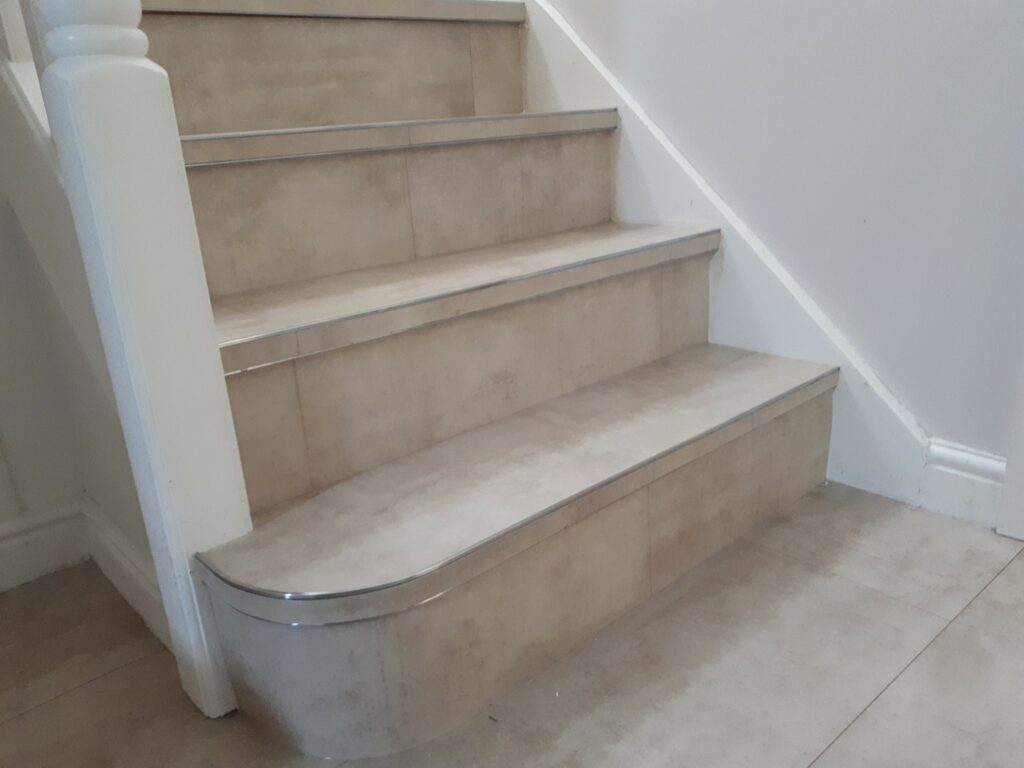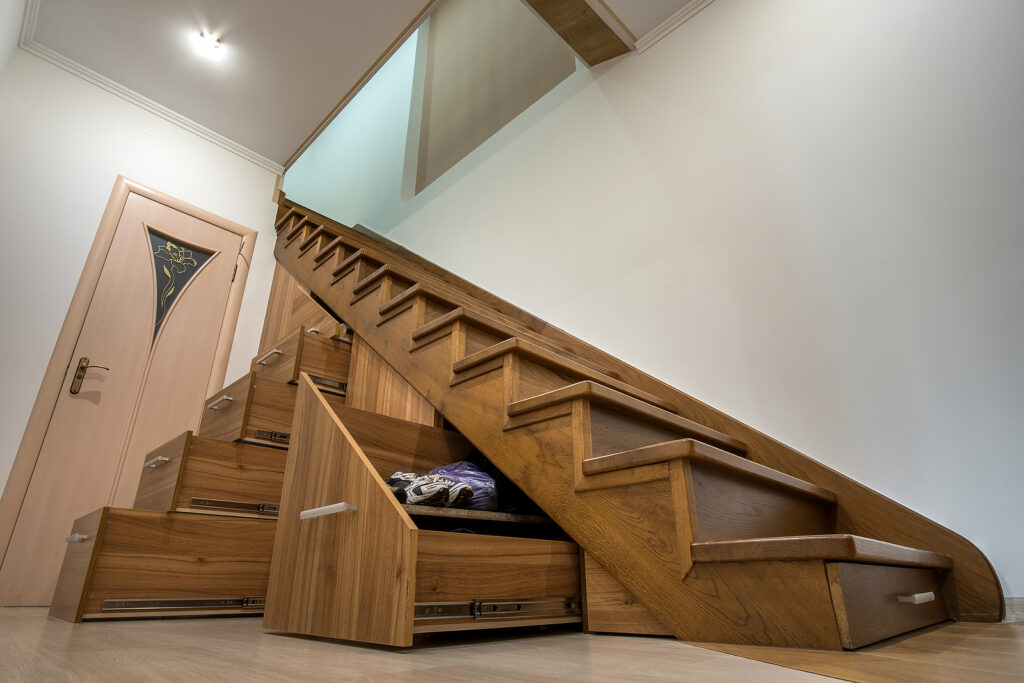How to Repair Stair Nosing: Tips for Rubber, Vinyl and Wood

Stair nosing protects the step underneath from damage. Nosing also provides extra grip and better safety for people using the stairs, as they are typically made of materials such as rubber, vinyl and wood – giving them a textured grip. However, due to wear and tear, various types of damage can occur.We provide a wide range of stair products with free UK delivery. Our team is committed to providing the best products at the best price. You will see our quality products when you buy online.
Get in touch if you have any questions.
How to Repair Stair Nosing Made of Rubber
Rubber has the advantage of great flexibility, which means that in many cases it is simple to replace. There is no real point in fixing rubber stair nosing as it is so low cost and it is much easier to lay down a new piece of nosing.
As a result, the real challenge is in getting the existing rubber nosing up and off of the step edge. Laying the new tread is pretty simple, as rubber nosing comes at length and can be trimmed to fit almost any space.
To remove the tread and replace the rubber follow these simple steps:
- Rip up the broken nosing: You can probably do a good job tearing up the nosing by hand, but make sure to use gloves for safety. If you have trouble, pry with a screwdriver. Adhesive remover can get rid of any glue residue.
- Trim your new nosing: You need to be precise with your cuts but you can trim the very edges after placing the nosing on each step. The rubber will easily be cut with a Stanley knife or by using a sturdy pair of scissors.
- Glue the new tread: Using an epoxy or caulk you can now glue the nosing to each step, make sure you use an even layer right across the length of the rubber. There should be no air gaps between the rubber and the stair.
Small holes in the rubber can be temporarily covered with tape and may not cause an issue. However, even small gaps in the rubber can cause problems when moisture enters into the space – as it can result in the nosing becoming unstuck.
How to Repair Stair Nosing Made of Vinyl

Vinyl is similarly versatile to rubber but after manufacturing it will become hard, which means repairing it can be tricky. As a result, it is again often better to simply replace vinyl for the best results.
One thing you can use is adhesive grip tape as a short term measure, which is designed to be disposable and will still provide a fine walking surface. However, you cannot repair cracks and scratches and replacement will be necessary.
To replace your vinyl nosing use the following easy steps:
- Pry the nosing up: Using a screwdriver or a crowbar, gently pry up the vinyl nosing. If your nosing will be using both glue and screws to fix the tread to the stair then make sure you remove all screws before taking it off.
- Measure the stairs and cut the nosing: As vinyl is not as easy to trim you need to measure and cut the nosing very accurately. Some vinyl nosing comes in pre-cut lengths, so you may be able to skip this step.
- Dry fit and fix: Place your nosing on the step and you will be able to see whether it fits. You can even loosely fix any screws and try it out before finally fixing it with your adhesive.
Vinyl nosing provides a suitable surface straight away. However, make sure you allow all of the adhesive to completely dry before use. The rule is 1 hour for an absorbent surface, like wood, and 2 for a non-absorbent surface, like metal.
How to Repair Stair Nosing Made of Wood

Wood nosing probably looks the best, but it also presents a bit of difficulty when it comes to damage. If you have a clean break on the lower portion of the nosing you may be able to fix the problem using ordinary wood glue.
However, any damage to the upper portion of the nosing (where it comes into contact with the foot) may require more extensive treatment. If you are not replacing the nosing entirely this is usually in the form of split repair kits
Although products vary slightly, split repair kits involve the following steps:
- Preparing the filler: Kits use a form of epoxy or filler to cleanly fill in any cracks. You can then smooth this into an even surface and also polish with your favourite varnish or lacquer – for an almost invisible appearance.
- Applying the filler: Using a syringe, apply the filler across any gaps caused by heavy impacts, scratches or abrasion. This is a precise manoeuvre, but the needle is not sharp and will allow the filler to penetrate all gaps.
- Finishing the filler: After hardening the epoxy will have a solid but lumpy appearance. Using a Stanley knife or similar tool, whittle off any excess to a level shape. To finish, sand the nosing until the filler is completely flush.
Although rubber can pierce with no issues and vinyl cracks neatly, wood can split and splinter in a very annoying way. However, split repair kits are a good option for when you do not want to replace the wood – after all, it can be quite expensive!
How to Prevent Broken Stair Nosing
It can be a challenge to keep your stair nosing in good condition, especially with heavy and frequent use. Quality products will last longer, so make sure that you always select reputable suppliers. Look for signs of quality such as free delivery and a wide selection of products in stock.
When You Need New Wood Nosing, Vinyl Nosing, or Rubber Nosing
Sometimes it is simply better to replace your broken nosing to ensure the stair tread is safe and performs well. As leading providers of a huge range of stair products, we are experts in sourcing the best nosing. Please feel free to browse our range, buy online or get in touch with us if you have any questions.


